Foods With Creatine: 5 of the Best Options
Author:
Unlock your full potential by engaging with our experts and community! Have questions about your fitness journey or looking for expert advice on weightlifting techniques? Don’t hesitate — leave a comment below and Oleksandr Maksymenko will provide a personalized answer and insights to help you reach your goals.
Torokhtiy is reader-supported. Some links are affiliate links, and we may earn a commission at no extra cost to you. See our disclosure page for details.
Are you interested in the benefits of creatine without wanting to take it as a supplement? There are plenty of foods that are natural sources of creatine. So, if you’re interested in how to get creatine naturally, keep reading to find out all the different foods with high creatine content.
In this article, we’ll be covering some foods with creatine that can potentially help you get the same ergogenic effects as supplementation. Keep in mind that supplementing with creatine monohydrate is likely a much simpler and cost effective way to saturate your creatine stores. Keep reading to find out the foods richest in creatine that you can incorporate into your diet.
Foods with creatine are all animal-based (beef, fish, etc.). However, creatine is found in small amounts in these foods (around 1.4-2.3g/lb). The recommended daily dose of supplemental creatine is 3-5g. While you could theoretically get this amount through food, supplementing is a much cheaper and easier option.
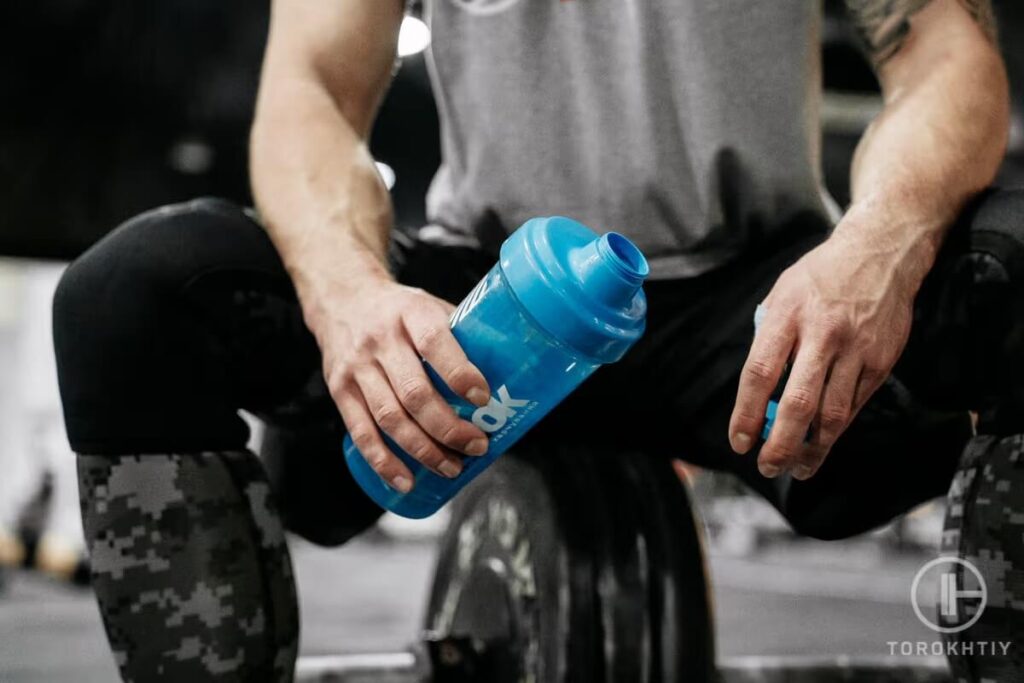
What Are the Best Foods With Creatine?
Before getting into foods that contain creatine, let’s quickly go over what creatine is and what it does. Creatine is synthesized from the amino acids glycine, arginine, and methionine. It helps to provide energy to muscular cells largely by converting ADP into ATP.
Your body can store around 160g of creatine at any given time, but most people only maintain levels of around 120g.
By maximizing your body’s creatine stores, or “saturating” your muscles, you can experience beneficial ergogenic effects such as increases in strength and lean body mass. This is most commonly achieved through supplementation, but could also be achievable through diet.
To maintain creatine stores, the daily creatine requirement for an 154lb man is around 2g. While around half of this is produced naturally by the body everyday, the rest of it must be found through food sources or supplementation.
Keep in mind, this is just to maintain creatine stores, and to fully saturate them, more creatine must be consumed. This leads to the question – what foods have creatine?
Creatine is known as a “carninutrient”, meaning that it is only found in animal products. This means the best creatine sources are things like beef and fish. There don’t appear to be any vegan foods that contain creatine.
As you may assume, this means vegans often get very little dietary creatine in, while those who eat diets rich in meat will get significantly more creatine. While animal products like milk and eggs do contain some creatine, it is in very low amounts that likely won’t make much of a difference in your body’s total creatine storage.
Even though most meats are natural creatine sources, it’s worth noting that there is not that much creatine found in foods especially when compared to supplements. Beef, pork, tuna, and salmon all have around 1.4-2.3g of creatine per pound.
Herring has the highest creatine content of any meat, with around 3-4.5g per pound. While these amounts may not seem too low, the recommended daily dose of supplemental creatine for saturating your muscles is 3-5g.
As you can imagine, taking a single scoop of creatine monohydrate is much easier than eating 1-2lbs of beef or fish everyday. It is much cheaper as well, with most creatine supplements being well under a dollar per serving.
With this being said, if someone is so inclined, they could potentially saturate their creatine stores with a diet rich in foods high in creatine.
Which Foods Contain the Most Creatine?
1. Herring
Undeniably the greatest source of dietary creatine is herring. With 3-4.5g/lb of creatine in Herring, you could get enough creatine to match a standard supplement serving with a single pound of herring.
Herring is rich in both fats and protein. Each 100g serving contains around 14g of fat, and 16g of protein. Like most other fish, it is also rich in vitamin B12, and Omega-3s, making it an all-around great protein source.
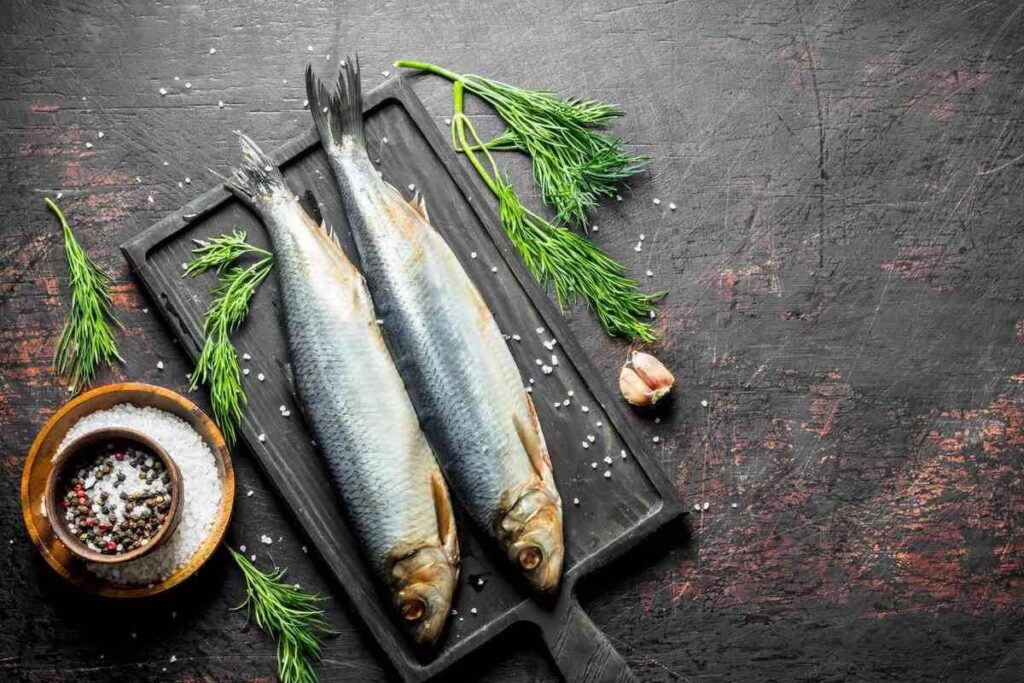
2. Pork
Next on our list is pork, which appears to have the second best creatine content out of all meats. Keep in mind that it still only has around half as much creatine as herring. In terms of creatine content, you can expect around 2g/lb of creatine in pork.
A 100g serving of ground pork has about 14g of fat and 18g of protein. You can also expect micronutrients like calcium, and potassium. Just keep in mind you’ll be getting quite a bit of saturated fats and cholesterol as well.

3. Other Fish (Salmon, Tuna, and Cod)
While not having quite as much creatine per pound as herring, other fish such as tuna, salmon, and cod, make great sources of dietary creatine as well. Salmon appear to have the most creatine out of the 3 with around 2g/lb. Cod comes in second with around 1.8g/lb, and Tuna has the least with about 1.4g/lb.
In one 100g serving of salmon, you can expect around 6g of fat and 20g of protein, as well as plenty of micronutrients like potassium, calcium, and selenium. Fish is also much lower in saturated fats and cholesterol when compared to beef and pork.
Cod and tuna are similar nutritionally to salmon but differ slightly. Cod has lower fat with similar protein content, while tuna has less fat and slightly more protein.
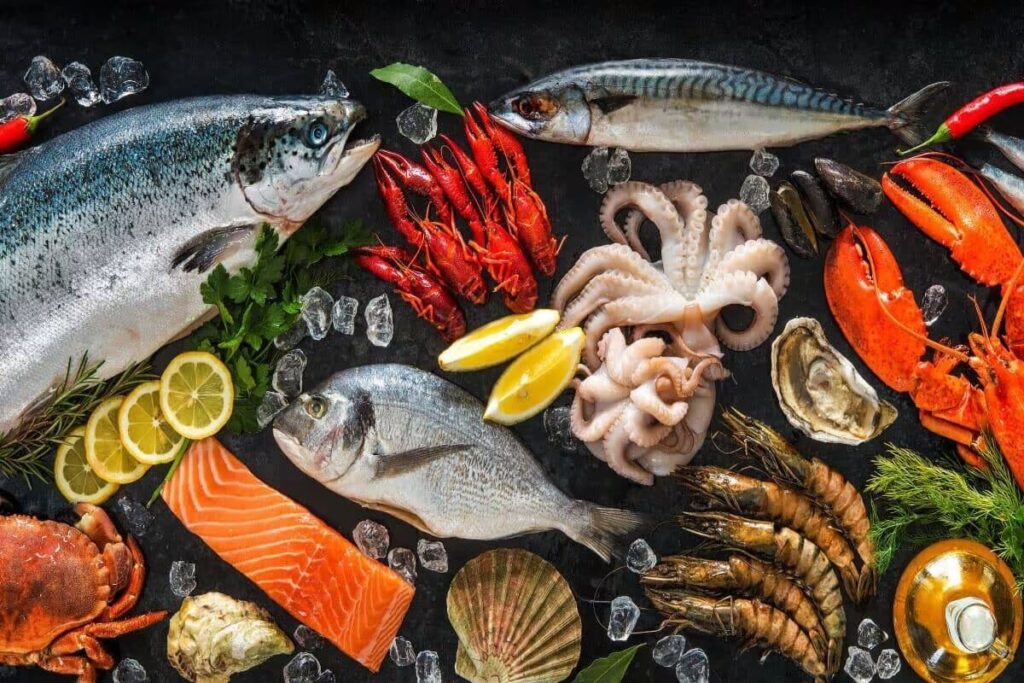
4. Beef
You may be surprised to see beef this low compared to other meats, so, how much creatine is in steak and other forms of beef? Beef has a similar, albeit slightly lower amount of creatine when compared to pork and salmon with around 1-2g/lb.
A 100g serving of 80/20 Ground Beef has around 20g of fat and 17g of protein. It is also rich in micronutrients like potassium, calcium, and iron. Just keep in mind beef is also very high in saturated fats and cholesterol.
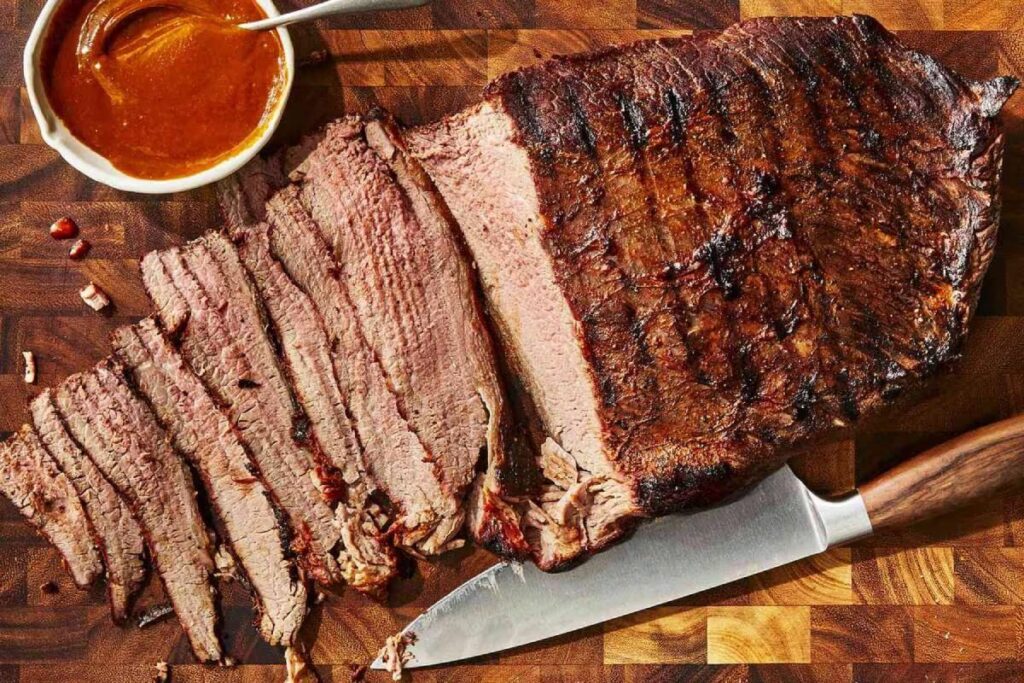
5. Chicken
While there is little information available about how much creatine can be found in chicken, it does still definitely contain some creatine. If you’re wondering how much creatine is in chicken, it’s probably somewhere around 1g/lb.
In 100g of chicken breast, you can expect around 4g of fat, and 21g of protein. Chicken is one of the best lean meat options available, even though it does contain a fairly high amount of cholesterol.
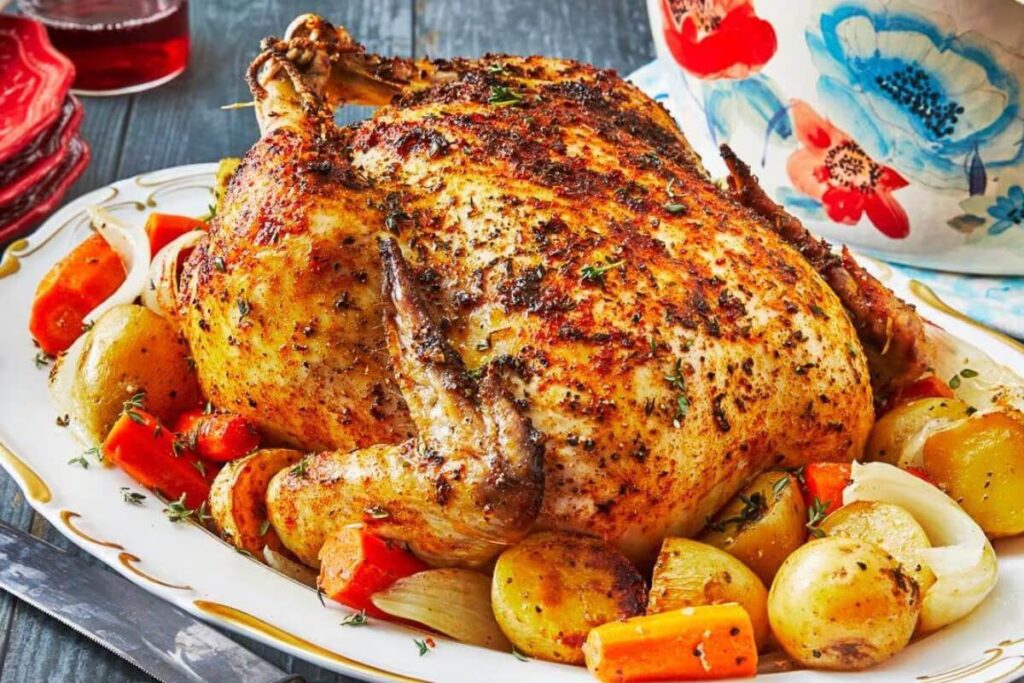
Can Creatine-Related Effects Be Achieved Without Supplementation?
As you can see from our list, most meat contains anywhere from 1-2g of creatine per pound. Most people eating a diet rich in meat and fish are already likely getting around 1g of creatine per day without even trying. So, is this enough to get noticeable benefits from creatine?
While your body is certainly putting this creatine to good use, in order to receive noticeable ergogenic effects from creatine, your body’s muscle stores need to be saturated with the compound.
As we mentioned, on average, the body can store around 160g of creatine at a time (of course, athletes with more muscle mass can accumulate even more creatine). With the average intake being around 1g of creatine per day, most people are storing around 120g at a time. This is filling up about ¾ of their body’s potential creatine stores.
Around 1-2g of this is converted to creatinine in the muscle everyday, so a level of around 120g is likely maintained through a combination of dietary creatine and what’s produced in the body.
However, to truly experience the benefits of creatine, you should be fully saturating your body’s creatine stores, maintaining closer to 160g (or 100%) in your creatine stores at any given time.
In order to do this, you need to be consuming more creatine than your body’s using in a day. While fully saturating your muscles with creatine is entirely possible by eating a diet rich in meat, it will be fairly difficult.
As you can imagine, to get an extra 3g of creatine everyday, you’ll have to be eating anywhere from 1-3 extra pounds of meat everyday! Not only is it difficult to consume this much food, but it will get incredibly expensive over a long period of time and may not be very healthy.
Because you need to continue eating this much to keep your muscles saturated, this diet is highly unsustainable.
So, while it’s certainly possible to saturate your muscles through dietary creatine intake alone, it’s likely not the best idea. There’s nothing wrong with trying to get some extra creatine in through food sources, it will just take a lot of meat every day in order to get any significant effects.
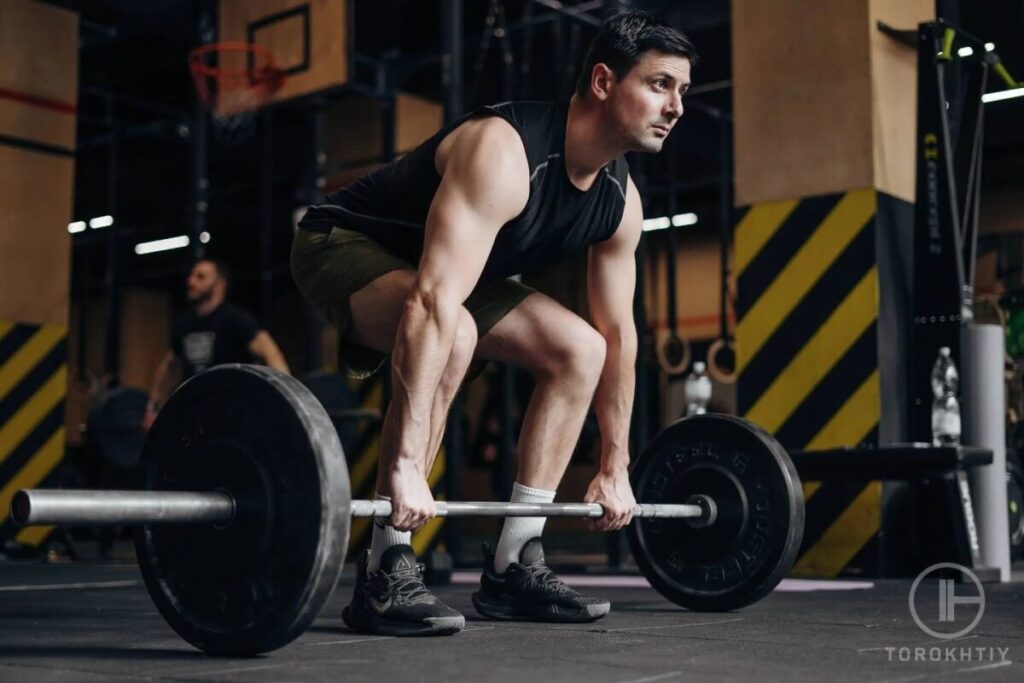
How Do Vegans Get Enough Creatine?
As we’ve mentioned, there are no real vegan sources of creatine. Because meat and fish are the most creatine rich foods, the average meat eater is likely getting around 1g of dietary creatine in each day, while vegans are getting none. Therefore, vegans will use available amino acids to synthesize the creatine needed to maintain average levels.
With vegans likely not getting any dietary creatine in, their body will naturally have lower creatine stores than somebody regularly eating meat. While vegetarians are still able to synthesize creatine in the body, the body isn’t able to naturally produce enough creatine to maintain very high creatine stores.
While vegetarians likely won’t become deficient in creatine, their creatine stores will consistently be on the lower end of the normal range.
So, while vegans and vegetarians will maintain enough creatine in their body to function normally, they certainly won’t synthesize enough naturally to experience any of the benefits of saturated creatine stores.
This is where supplementation comes in. A vegan or vegetarian supplementing with creatine will likely experience significantly better effects than someone who regularly eats meat. This is because their creatine stores are naturally at a lower level. There will be a much more significant difference once they fully saturate their muscle stores with creatine, leading to more significant effects on their training.
While everyone will likely experience ergogenic effects from fully saturating their creatine stores, vegans and vegetarians are likely to experience the most noticeable benefits in this regard.
How Much Creatine Is Needed to Get the Benefits?
Some of the benefits of fully saturating your creatine stores include improving high-intensity exercise performance, as well as improving recovery, and reducing risk of injury. These are benefits that will appeal to virtually all athletes, so, how much creatine is necessary to experience them?
As we’ve covered in this article, most people store around 120g or ¾ of their body’s potential total creatine. Benefits of creatine are experienced when these stores are fully saturated with around 160g of creatine.
creatine dosage calculator
Loading Phase:
Maintenance Phase:
The body uses up around 2g of creatine everyday. While the body will naturally synthesize around 1g of creatine to replenish this lost amount, the rest needs to be found through diet or supplementation. In order to saturate creatine supplies, you need to be regularly taking in more creatine than your body is using everyday.
If you take 3g of creatine everyday through supplementation, you will likely fully saturate your muscles within a month. You can take more creatine (20g a day) to saturate your muscles quicker, but this is largely unnecessary.
So, if you wanted to saturate your muscles through food alone, you would need to eat around 1lb of herring, or 2-3lbs of other meat every day for a month to fully saturate your body’s creatine stores. Of course, to maintain elevated creatine stores, you would need to keep up this high level of creatine intake.
While it’s certainly possible, we believe simply taking a single scoop of creatine everyday is the far superior option.
Overall, in order to experience the benefits of creatine you need to fully saturate your body’s creatine stores. To do this, you need to regularly be taking in more creatine than your body is using. This can be done with 3 extra grams of creatine a day for a month. While this can be done through food, we highly recommend using a supplement instead.
Best Creatine Supplement – Transparent Labs Creatine HMB
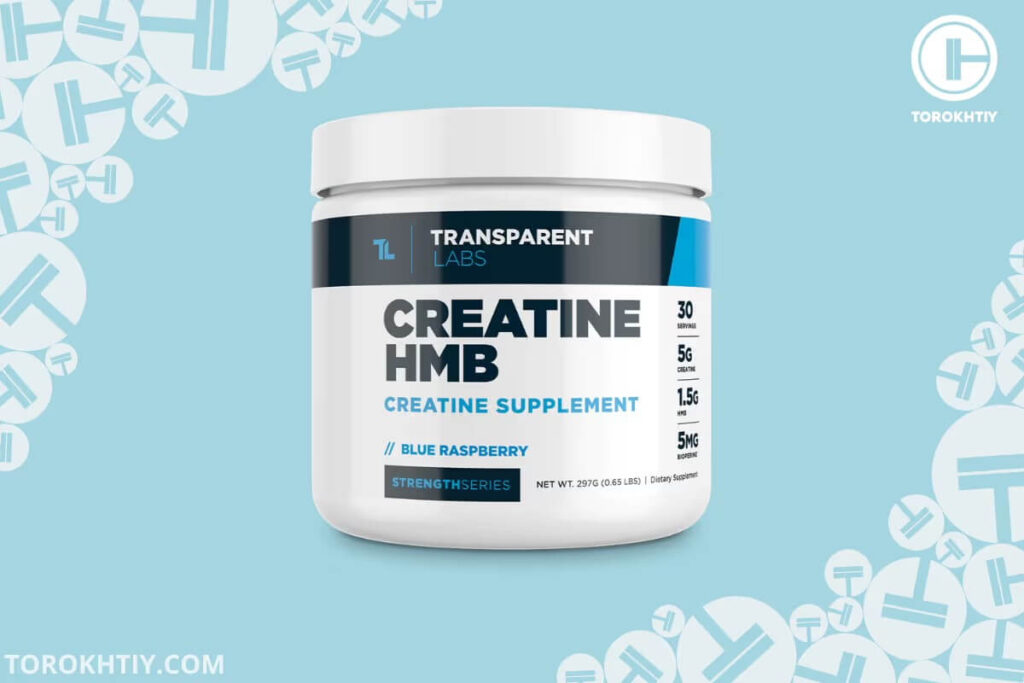
Our recommendation for the best overall creatine supplement on the market is Creatine HMB from Transparent Labs. If you’re familiar with Transparent Labs, you’re likely already aware that their products are some of the most consistently high-quality supplements available on the market. Their creatine is no exception!
With 5g of creatine monohydrate in each serving, you can be confident you’ll be getting plenty of creatine in each scoop to fully saturate your muscles within 2-4 weeks (no herring required).
On top of this, Transparent Labs supplement features both HMB and Vitamin D. While HMB is certainly a lesser-known supplement than creatine, it has some similar benefits. Namely, it has been shown to increase strength and lean muscle mass when taken alongside resistance training.
Transparent Labs features a solid 1.5 grams of HMB in each scoop. It also contains 63% of your daily recommended Vitamin D, which has a ton of health benefits including muscular strength, disease prevention, and bone health.
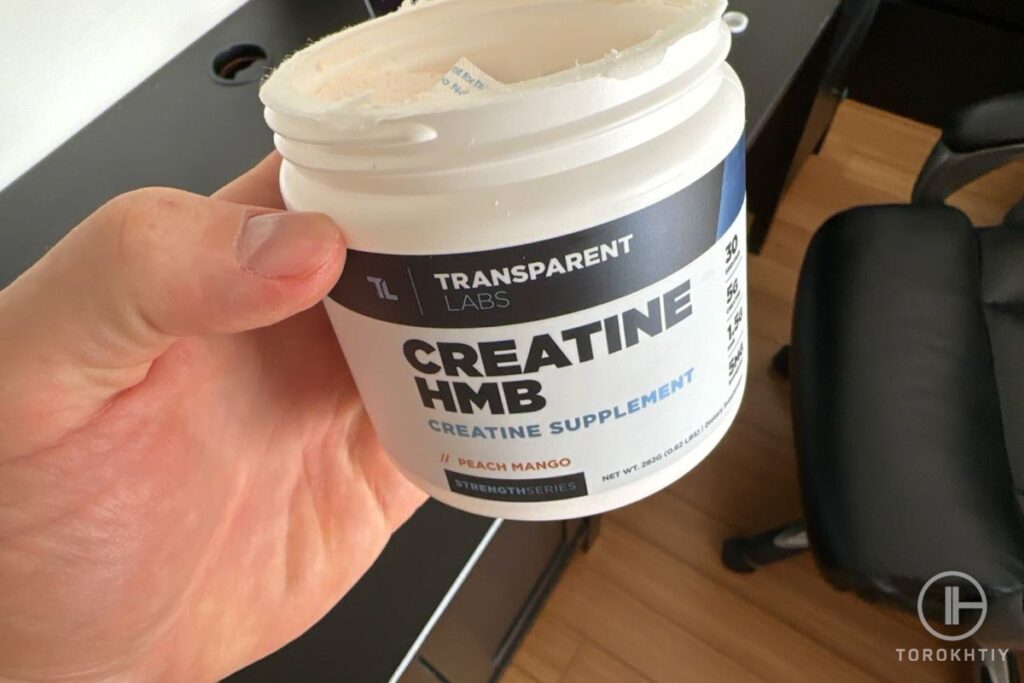
These 2 added ingredients make Transparent Labs’ supplement so much more powerful than a basic creatine monohydrate.
Another thing that makes this product stand out from other creatine supplements is that it comes in a wide variety of flavored options. Most creatine only comes in an unflavored variety, but Transparent Labs has 11 total different flavors to choose from!
Also, like all of Transparent Labs products, their Creatine is made without any artificial preservatives, dyes, or flavorings, so you can be confident it’s 100% natural.
The one major downside to this product is that it comes at a much higher price point compared to more basic creatine supplements. Each serving costs around $1.50. While you can certainly get a cheaper, more basic creatine supplement, it’s up to you if the added HMB, Vitamin D, and extra flavors are worth it.
Either way, a single serving is certainly going to be cheaper and easier to get down than a pound of herring.
FAQ
Do Eggs Have Creatine?
Yes, eggs and milk both contain creatine, although not very much! The only foods that have significant amounts of creatine are fish and meat. It’s difficult enough to get significant amounts of creatine through meat alone, making it virtually impossible to increase creatine stores through eggs alone.
What Is Creatine Naturally Found In?
Creatine is naturally found in fish and meat, with herring having the highest creatine content of any animal products available. It is also naturally synthesized by the body through the amino acids glycine, arginine, and methionine.
Do Any Vegetables Have Creatine?
No, creatine is a carninutrient, meaning that it’s only found in animal products. While it is naturally synthesized in the body, there aren’t any natural vegan creatine sources.
This means it’s unlikely that vegans will become deficient in creatine, but it’s also unlikely they will have especially high creatine stores. Most vegans are likely on the lower end of the normal range for creatine stores.
Conclusion
Creatine is a carninutrient meaning it is exclusively found in animal products like fish and meat. While there are plenty of foods that contain creatine, it’s exceedingly difficult to get enough creatine to fully saturate your muscle stores through food alone. You would need to consistently eat 1-3lbs of meat everyday to eventually saturate your muscles with creatine. For an easier and more budget-friendly approach, we recommend taking 3-5g of a creatine monohydrate supplement every day instead. For our top pick, we recommend Transparent Labs Creatine HMB, but there are plenty of other high-quality creatine supplements available as well.
Do you currently take a creatine supplement? Have you ever tried to saturate your creatine stores through food alone? We’d love to hear your thoughts in the comments below!
Also read:
- What Happens When You Stop Taking Creatine
- Creatine vs Amino Acids
- Creatine Powder vs Pills
- Best Things to Mix Creatine With
- Best Creatine Pills
- When to Take Creatine and Pre Workout
- Creatine Hcl vs Monohydrate
- How Much Creatine Should I Take
- Creatine For Women
References:
- “Creatine,” University of Delaware, https://www1.udel.edu/chem/C465/senior/fall00/Performance2/creatine.
- Richard B Kreider, Douglas S Kalman, Jose Antonio, Tim N Ziegenfuss, Robert Wildman, Rick Collins, Darren G Candow, Susan M Kleiner, Anthony L Almada, Hector L Lopez, “International Society of Sports Nutrition position stand: safety and efficacy of creatine supplementation in exercise, sport, and medicine,” National Library of Medicine, (2017).
- Richard B. Kreider PhD, Creatine: State of the Science at the Millennium (USA: University of Memphis, 2000) http://surl.li/kjuhj
- Margaret E Brosnan, John T Brosnan, “The role of dietary creatine,” National Library of Medicine, (2016).
- “PACIFIC HERRING,” Regents of the University of California, https://caseagrant.ucsd.edu/seafood-profiles/pacific-herring.
- Becca Brennen, “Salmon Nutritional Information,” U.S. Department of Agriculture, https://blogs.cornell.edu/wildharvesttest/salmon-nutritional-information (accessed 2018).
- David Brown, Nutrition Facts (University of Rochester Medical Center, 2023), http://surl.li/kjuhp
- Nutrition Label, http://surl.li/kjuhr
- Angela Harter Alger, Creatine (PressBooks, 2022), 15, https://pressbooks.calstate.edu/nutritionandfitness/chapter/8-2-creatine/
- Felipe Ribeiro, Igor Longobardi, Pedro Perim, Breno Duarte, Pedro Ferreira, Bruno Gualano, Hamilton Roschel, Bryan Saunders, “Timing of Creatine Supplementation around Exercise: A Real Concern?” National Library of Medicine, (2021).
- Jasmine S Thomson, Patricia E Watson, David S Rowlands, “Effects of nine weeks of beta-hydroxy-beta-methylbutyrate supplementation on strength and body composition in resistance trained men” National Library of Medicine, (2009).
Why Trust Us?
With over 20 years in Olympic weightlifting, strength training, nutrition coaching, and general fitness our team does its best to provide the audience with ultimate support and meet the needs and requirements of advanced athletes and professional lifters, as well as people who strive to open new opportunities and develop their physical capabilities with us.
By trusting the recommendations of our certified experts in coaching, nutrition, and sports training programming, as well as scientific consultants, and physiotherapists, we provide you with thorough, well-considered, and scientifically proven content. All the information given in the articles concerning workout programming, separate exercises, and athletic performance, in general, is based on verified data.
The product testing process is described in more detail here.
Author: Oleksandr Maksymenko
Certified Sports Nutritionist,
MSc Sports Dietetics
Specializing in: Weight management, Fitness / Sports nutrition
Oleksandr is a professional fitness nutritionist certified by the Fitness Professional Association (FPA). He follows the principles of evidence-based dietetics and fosters a healthy relationship with food in his clients, ensuring there are no strict prohibitions on their favorite foods or frequent lapses. His primary goal is not only to achieve results for you but also to sustain them over the long term, all while enjoying tasty and delicious food.



Still have questions after reading our article? Unlock your full potential by engaging with our experts and community! Don’t hesitate — leave a comment below and Oleksandr Maksymenko will provide a personalized answer and insights to help you reach your goals.